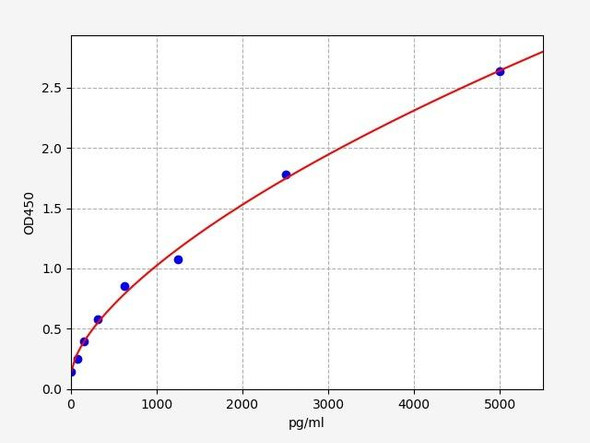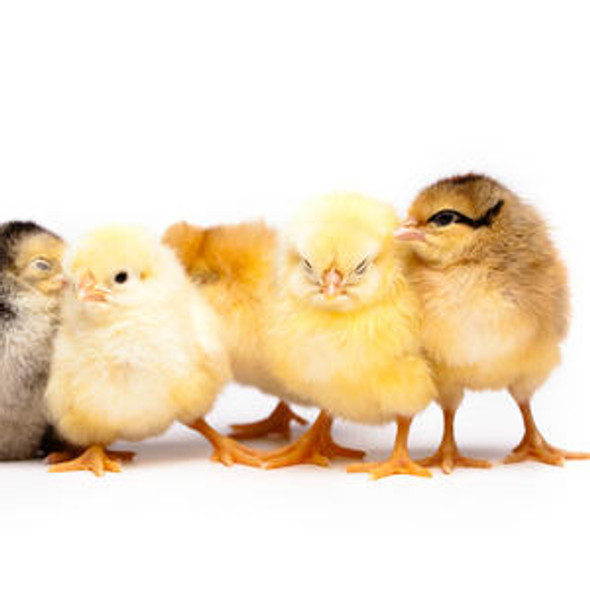Rat HES1 ELISA Kit (RTFI00411)
- SKU:
- RTFI00411
- Product Type:
- ELISA Kit
- Size:
- 96 Assays
- Uniprot:
- Q04666
- Sensitivity:
- 46.875pg/ml
- Range:
- 78.125-5000pg/ml
- ELISA Type:
- Sandwich
- Synonyms:
- Hes1, HL, HRY, BHLHB39, bHLHb39hairy homolog, Drosophila, Class B basic helix-loop-helix protein 39, Hairy and enhancer of split 1, hairy and enhancer of split 1,, Drosophila, Hairy homolog, Hairy-like protein, Hes1, HES-1, hHL, HL, HRYHHL, transcrip
- Reactivity:
- Rat
- Research Area:
- Epigenetics and Nuclear Signaling
Description
Rat HES1 ELISA Kit
The Rat HES1 ELISA Kit is specifically designed for the quantitative detection of HES1 (Hairy and Enhancer of Split 1) levels in rat serum, plasma, and cell culture supernatants. This kit is highly sensitive and specific, providing accurate and consistent results for research applications.HES1 is a critical transcription factor involved in the regulation of cell differentiation and proliferation. It plays a key role in various biological processes, including neurogenesis, hematopoiesis, and development.
Dysregulation of HES1 has been implicated in the pathogenesis of cancer, cardiovascular diseases, and neurological disorders, highlighting its importance as a potential biomarker for disease progression and therapeutic targeting.With the Rat HES1 ELISA Kit, researchers can confidently measure HES1 levels in rat samples with precision and efficiency, furthering our understanding of the molecular mechanisms underlying various diseases and aiding in the development of novel treatment strategies.
| Product Name: | Rat Hes1 (Transcription factor HES-1) ELISA Kit |
| Product Code: | RTFI00411 |
| Size: | 96 Assays |
| Target: | Rat Hes1 |
| Alias: | Hes1, HL, HRY, BHLHB39, bHLHb39hairy homolog, Drosophila, Class B basic helix-loop-helix protein 39, Hairy and enhancer of split 1, hairy and enhancer of split 1, Drosophila, Hairy homolog, Hairy-like protein, Hes1, HES-1, hHL, HL, HRYHHL, transcription factor HES-1 |
| Reactivity: | Rat |
| Detection Method: | Sandwich ELISA, Double Antibody |
| Sensitivity: | 46.875pg/ml |
| Range: | 78.125-5000pg/ml |
| Storage: | 4°C for 6 months |
| Note: | For Research Use Only |
| Recovery: | Matrices listed below were spiked with certain level of Rat Hes1 and the recovery rates were calculated by comparing the measured value to the expected amount of Rat Hes1 in samples. | ||||||||||||||||
| |||||||||||||||||
| Linearity: | The linearity of the kit was assayed by testing samples spiked with appropriate concentration of Rat Hes1 and their serial dilutions. The results were demonstrated by the percentage of calculated concentration to the expected. | ||||||||||||||||
| |||||||||||||||||
| Intra-Assay: | CV <8% | ||||||||||||||||
| Inter-Assay: | CV <10% |
| Uniprot: | Q04666 |
| UniProt Protein Function: | HES1: Transcriptional repressor of genes that require a bHLH protein for their transcription. May act as a negative regulator of myogenesis by inhibiting the functions of MYOD1 and ASH1. Binds DNA on N-box motifs: 5'-CACNAG-3' with high affinity and on E-box motifs: 5'-CANNTG-3' with low affinity. May play a role in a functional FA core complex response to DNA cross-link damage, being required for the stability and nuclear localization of FA core complex proteins, as well as for FANCD2 monoubiquitination in response to DNA damage. |
| UniProt Protein Details: | Protein type:Cell development/differentiation; Motility/polarity/chemotaxis; Transcription factor Chromosomal Location of Human Ortholog: 11q22 Cellular Component: chromatin; cytoplasm; intracellular; nuclear matrix; nucleoplasm; nucleus Molecular Function:chaperone binding; chromatin binding; DNA binding; histone deacetylase binding; JUN kinase binding; protein binding; protein complex binding; protein homodimerization activity; sequence-specific DNA binding; transcription factor activity; transcription factor binding Biological Process: adenohypophysis development; artery morphogenesis; auditory receptor cell differentiation; auditory receptor cell fate determination; cell adhesion; cell fate commitment; cell maturation; cell migration; hair cell differentiation; hindbrain morphogenesis; in utero embryonic development; inner ear receptor stereocilium organization and biogenesis; lateral inhibition; liver development; lung development; midbrain development; midbrain-hindbrain boundary morphogenesis; negative regulation of auditory receptor cell differentiation; negative regulation of cell differentiation; negative regulation of neurogenesis; negative regulation of neuron differentiation; negative regulation of oligodendrocyte differentiation; negative regulation of transcription from RNA polymerase II promoter; negative regulation of transcription, DNA-dependent; neural tube development; neuron differentiation; neuron morphogenesis during differentiation; Notch signaling pathway; oculomotor nerve development; pancreas development; pattern specification process; pituitary gland development; positive regulation of astrocyte differentiation; positive regulation of BMP signaling pathway; positive regulation of cell proliferation; positive regulation of DNA binding; positive regulation of glial cell differentiation; positive regulation of JAK-STAT cascade; positive regulation of mitotic cell cycle, embryonic; positive regulation of Notch signaling pathway; positive regulation of T cell proliferation; positive regulation of transcription from RNA polymerase II promoter; positive regulation of transcription, DNA-dependent; positive regulation of tyrosine phosphorylation of STAT protein; protein complex assembly; radial glial cell differentiation in the forebrain; regulation of auditory receptor cell differentiation; regulation of epithelial cell proliferation; regulation of fat cell differentiation; regulation of neurogenesis; regulation of protein heterodimerization activity; regulation of timing of cell differentiation; regulation of timing of neuron differentiation; regulation of transcription from RNA polymerase II promoter; response to alkaloid; response to organic cyclic substance; smoothened signaling pathway; somatic stem cell maintenance; STAT protein nuclear translocation; telencephalon development; thymus development; trochlear nerve development |
| NCBI Summary: | may act as a transcriptional repressor; may inhibit cell adhesion molecule NCAM-dependent neurite outgrowth [RGD, Feb 2006] |
| UniProt Code: | Q04666 |
| NCBI GenInfo Identifier: | 148747225 |
| NCBI Gene ID: | 29577 |
| NCBI Accession: | NP_077336.3 |
| UniProt Related Accession: | Q04666 |
| Molecular Weight: | 29,622 Da |
| NCBI Full Name: | transcription factor HES-1 |
| NCBI Synonym Full Names: | hes family bHLH transcription factor 1 |
| NCBI Official Symbol: | Hes1 |
| NCBI Protein Information: | transcription factor HES-1 |
| UniProt Protein Name: | Transcription factor HES-1 |
| UniProt Synonym Protein Names: | Hairy and enhancer of split 1; Hairy-like protein; RHL |
| Protein Family: | Transcription factor |
| UniProt Gene Name: | Hes1 |
| Step | Procedure |
| 1. | Set standard, test sample and control (zero) wells on the pre-coated plate respectively, and then, record their positions. It is recommended to measure each standard and sample in duplicate. Wash plate 2 times before adding standard, sample and control (zero) wells! |
| 2. | Aliquot 0.1ml standard solutions into the standard wells. |
| 3. | Add 0.1 ml of Sample / Standard dilution buffer into the control (zero) well. |
| 4. | Add 0.1 ml of properly diluted sample ( Human serum, plasma, tissue homogenates and other biological fluids.) into test sample wells. |
| 5. | Seal the plate with a cover and incubate at 37°C for 90 min. |
| 6. | Remove the cover and discard the plate content, clap the plate on the absorbent filter papers or other absorbent material. Do NOT let the wells completely dry at any time. Wash plate X2. |
| 7. | Add 0.1 ml of Biotin- detection antibody working solution into the above wells (standard, test sample & zero wells). Add the solution at the bottom of each well without touching the side wall. |
| 8. | Seal the plate with a cover and incubate at 37°C for 60 min. |
| 9. | Remove the cover, and wash plate 3 times with Wash buffer. Let wash buffer rest in wells for 1 min between each wash. |
| 10. | Add 0.1 ml of SABC working solution into each well, cover the plate and incubate at 37°C for 30 min. |
| 11. | Remove the cover and wash plate 5 times with Wash buffer, and each time let the wash buffer stay in the wells for 1-2 min. |
| 12. | Add 90 µL of TMB substrate into each well, cover the plate and incubate at 37°C in dark within 10-20 min. (Note: This incubation time is for reference use only, the optimal time should be determined by end user.) And the shades of blue can be seen in the first 3-4 wells (with most concentrated standard solutions), the other wells show no obvious color. |
| 13. | Add 50 µL of Stop solution into each well and mix thoroughly. The color changes into yellow immediately. |
| 14. | Read the O.D. absorbance at 450 nm in a microplate reader immediately after adding the stop solution. |
When carrying out an ELISA assay it is important to prepare your samples in order to achieve the best possible results. Below we have a list of procedures for the preparation of samples for different sample types.
| Sample Type | Protocol |
| Serum: | If using serum separator tubes, allow samples to clot for 30 minutes at room temperature. Centrifuge for 10 minutes at 1,000x g. Collect the serum fraction and assay promptly or aliquot and store the samples at -80°C. Avoid multiple freeze-thaw cycles. If serum separator tubes are not being used, allow samples to clotovernight at 2-8°C. Centrifuge for 10 minutes at 1,000x g. Removeserum and assay promptly or aliquot and store the samples at-80°C. Avoid multiple freeze-thaw cycles. |
| Plasma: | Collect plasma using EDTA or heparin as an anti-coagulant. Centrifuge samples at 4°C for 15 mins at 1000 × g within 30 mins of collection. Collect the plasma fraction and assay promptly or aliquot and store the samples at -80°C. Avoid multiple freeze-thaw cycles.Note: Over haemolysed samples are not suitable for use with this kit. |
| Urine & Cerebrospinal Fluid: | Collect the urine (mid-stream) in a sterile container, centrifuge for 20 mins at 2000-3000 rpm. Remove supernatant and assay immediately. If any precipitation is detected, repeat the centrifugation step. A similar protocol can be used for cerebrospinal fluid. |
| Cell Culture Supernatant: | Collect the cell culture media by pipette, followed by centrifugation at 4°C for 20 mins at 1500 rpm. Collect the clear supernatant and assay immediately. |
| Cell Lysates: | Solubilize cells in lysis buffer and allow to sit on ice for 30 minutes. Centrifuge tubes at 14,000 x g for 5 minutes to remove insoluble material. Aliquot the supernatant into a new tube and discard the remaining whole cell extract. Quantify total protein concentration using a total protein assay. Assay immediately or aliquot and store at ≤ -20°C. |
| Tissue Homogenates: | The preparation of tissue homogenates will vary depending upon tissue type. Rinse tissue with 1X PBS to remove excess blood & homogenizein 20ml of 1X PBS (including protease inhibitors) and store overnight at ≤ -20°C. Two freeze-thaw cycles are required to break the cell membranes. To further disrupt the cell membranes you can sonicate the samples. Centrifuge homogenates for 5 mins at 5000xg. Remove the supernatant and assay immediately or aliquot and store at -20°C or-80°C. |
| Tissue Lysates: | Rinse tissue with PBS, cut into 1-2 mm pieces, and homogenize with a tissue homogenizer in PBS. Add an equal volume of RIPA buffer containing protease inhibitors and lyse tissues at room temperature for 30 minutes with gentle agitation. Centrifuge to remove debris. Quantify total protein concentration using a total protein assay. Assay immediately or aliquot and store at ≤ -20 °C. |
| Breast Milk: | Collect milk samples and centrifuge at 10,000 x g for 60 min at 4°C. Aliquot the supernatant and assay. For long term use, store samples at -80°C. Minimize freeze/thaw cycles. |






